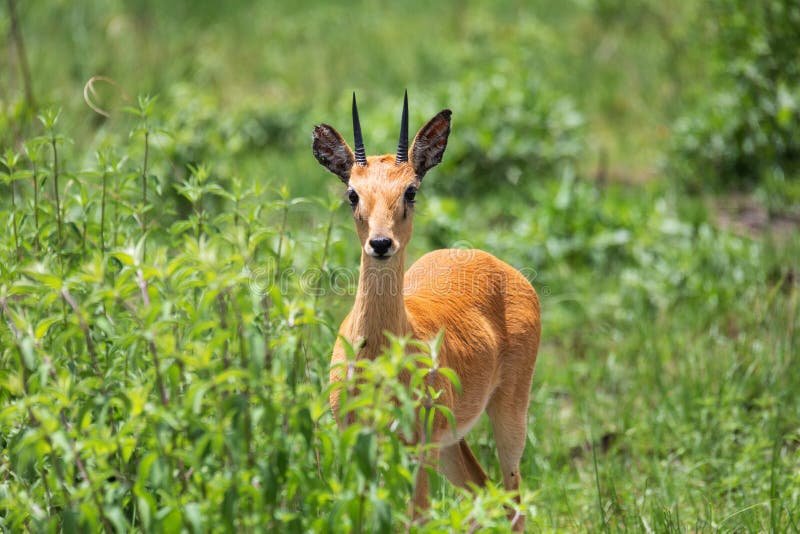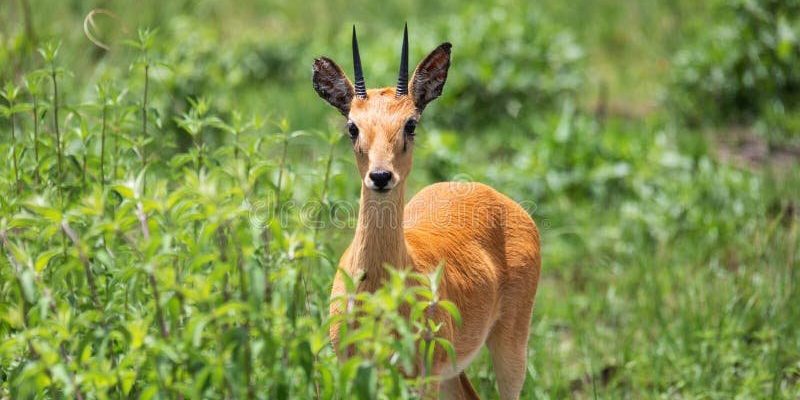
What Is The Oribi?
The Oribi is a small antelope that stands just around 60 cm (about 24 inches) tall at the shoulder. With a light brown or grayish coat and striking white markings on its face and legs, it’s easy to see why this species can charm anyone who spots it in the wild. It prefers areas with dense grass, which offers both food and protection from predators.
The Oribi has a unique way of navigating its environment. It’s a sprightly creature known for its incredible agility and speed. When threatened, it can spring into action, leaping away to safety with grace—you could say it’s like a ballet dancer of the savanna. This adaptability allows the Oribi to escape predators like lions and hyenas, as well as human encroachment that threatens its habitat.
You might be surprised to learn that the Oribi is a shy and elusive animal. It’s often solitary or found in small groups, making it tougher for conservationists to study and monitor its population. This means that the more we learn about the Oribi, the more we can understand how to support its survival.
Why Is The Oribi Endangered?
The Oribi faces several threats leading to its endangered status. One of the major factors is habitat loss. As agriculture expands and urban areas grow, these little antelopes lose their grassy homes. It’s like if your favorite park turned into a parking lot—suddenly, your space for relaxation and play is gone.
In addition to habitat loss, hunting poses a significant risk. While some locals hunt for food, others may hunt the Oribi for sport or to sell their hides. This pressure can seriously impact their populations, making it harder for them to bounce back.
Lastly, climate change plays a role too. Changes in weather patterns can disrupt the delicate balance of their ecosystems. It’s like if the seasons suddenly changed overnight, leading to confused plants and animals alike. This unpredictability can make it even harder for the Oribi to find food and shelter.
Current Population Status and Trends
Estimates suggest that the Oribi population is currently declining, with some sources indicating fewer than 20,000 individuals remaining in the wild. This makes it vital to monitor their population trends closely. Conservationists use various methods, such as camera traps and wildlife surveys, to gather data on their numbers.
In different countries, the Oribi has varying levels of protection. For example, in South Africa, it is listed as “Vulnerable” on the IUCN Red List, while in parts of East Africa, it may not be listed at all. Such discrepancies highlight the importance of regional conservation efforts that consider both the local communities and the ecology of the land.
Monitoring these population trends is crucial for understanding how effective conservation strategies have been. It’s like checking your garden’s growth; you need to know what’s thriving and what’s struggling to make the right changes.
Global Conservation Efforts for the Oribi
Around the world, various organizations are working to protect the Oribi and their habitats. Many of these efforts focus on habitat restoration. This means working to restore areas that have been degraded by human activity. It’s like reviving an old, neglected garden—sometimes, with a little love and attention, it can bloom again.
One successful approach has been forming partnerships with local communities. By involving people in conservation efforts, organizations can address both the needs of wildlife and the livelihood of the local population. This collaborative approach helps ensure that everyone benefits from healthy ecosystems.
Additionally, there are awareness campaigns to educate the public about the Oribi. By sharing the story of this small antelope, conservationists hope to inspire people to take action. Think of it like a rallying cry; when individuals understand the beauty and value of the Oribi, they may be more likely to support its protection.
What Can You Do to Help the Oribi?
You might be wondering what you can do to help the Oribi and other endangered species. Here are some meaningful actions you can take:
- Educate Yourself: Learn more about the Oribi and its habitat. Knowledge is a powerful tool in conservation.
- Support Conservation Organizations: Donate to or volunteer with groups dedicated to protecting wildlife and their habitats.
- Advocate for Sustainable Practices: Whether it’s reducing your plastic use or supporting sustainable agriculture, every small action helps conserve the environment.
- Spread the Word: Share what you’ve learned about the Oribi with friends and family. Awareness can lead to action.
Every little bit helps, and remember, even if you’re not in Africa, your actions can still make waves in the global conservation effort.
The Role of Local Communities in Oribi Conservation
Local communities play a pivotal role in the conservation of the Oribi. When these communities are integrated into conservation plans, the likelihood of success increases. For instance, involving locals in protecting land can create a sense of ownership and responsibility.
When people depend on their environment for their livelihoods, their knowledge and experience can be invaluable. Community members can offer insights into traditional land management practices that are sustainable and beneficial for the Oribi. It’s like having a wise friend who knows the best paths to take in a forest—local knowledge is a treasure.
Moreover, sustainable tourism initiatives can provide economic incentives for communities to protect their natural resources. When people recognize that healthy ecosystems can attract tourists, they’re more inclined to protect those environments. It’s a great way to align conservation efforts with human needs.
The Oribi may be small, but its story is significant. As we’ve explored, this charming antelope faces serious threats, but there’s hope through various conservation efforts. By understanding the challenges and opportunities surrounding the Oribi, we can join in on the journey to protect this beautiful species.
So, let’s continue to shine a light on the Oribi and advocate for its survival. Every action counts, whether it’s learning, sharing, or directly contributing to conservation. After all, it’s up to us to ensure that future generations can also admire the grace and beauty of the Oribi leaping through the long grasses of Africa. Together, we can make a difference.

